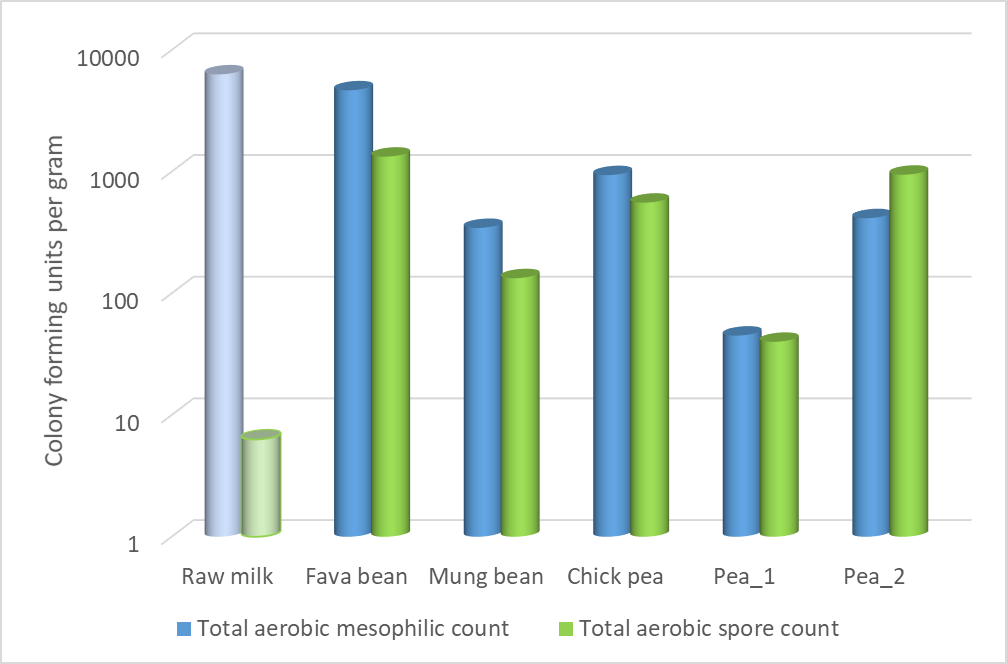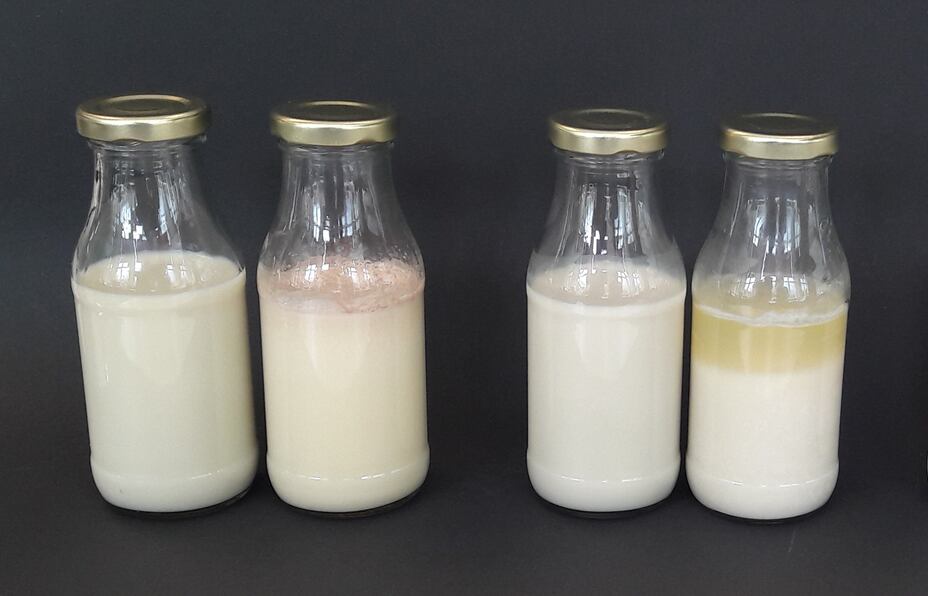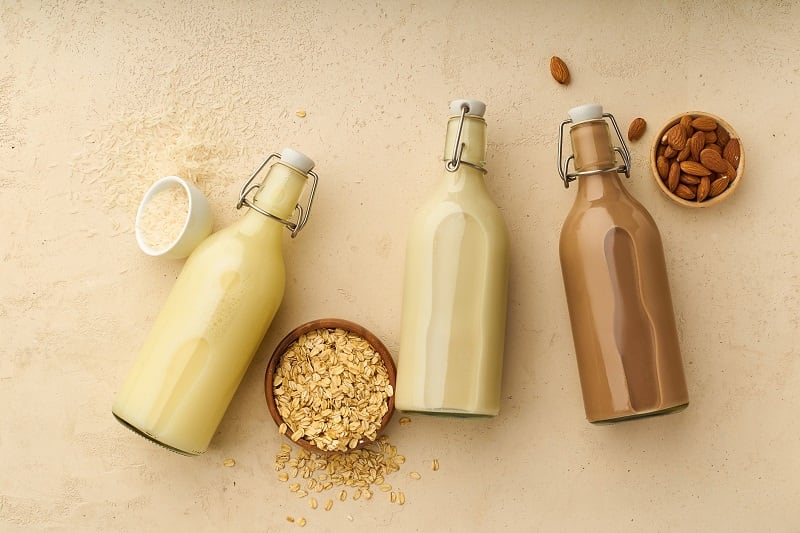The market for meat- and dairy alternatives is growing at a massive rate. But while these plant-based products may deliver as close an eating experience as possible to their animal-based counterparts, the food safety challenge they present can be very different. To find out more, I spoke to Marjon Wells-Bennik, NIZO’s Principal Scientist Food Safety, who has over 20 years academic and industrial experience in food safety and microbiology.
Joined up thinking throughout the chain enables plant-based food safety
René Floris: How does the food safety picture for plant-based differ from animal-based food?
Marjon Wells-Bennik: Food safety is a much more varied challenge for plant-based foods and dairy alternatives. For example, in the dairy industry, there is basically one main ingredient – raw milk – which is fairly consistent in terms of its nutritional composition, physical characteristics and microbiological contaminants.
Plant-based proteins, on the other hand, come from many different sources. Each has its own mix of proteins, sugars etc. The variety of microbes present is also much greater – and the levels of microbes can vary greatly too. The soil where the source plant is grown, how the plant is harvested, how the plant materials are processed to obtain the protein, even how plant and resulting ingredients are stored and transported can play a role. So, you have very different microbial contamination starting points and growth conditions.
To make matters even more complex, plant-based proteins can have very different solubilities and reactions to heat, which affects how they can be processed. All this makes food safety a very challenging issue for plant-based products – one that requires a more holistic approach.
RF: It is often said that microbial contamination in plant-based foods is less well understood. Is that true?
MW-B: The dairy industry has been investigating microbial contamination for decades and, as I said, the conditions there are much more consistent. So it is not surprising that knowledge of microbial contamination in plant-based protein ingredients is less developed. But progress is being made. For example, at NIZO we have carried out our own research into microbial contamination of ingredients used to make dairy alternatives based on coconuts, oats, almond, peas and other legumes. We found that both the level and variety of microbes was higher than in raw milk. Some of the varieties found in plant-based ingredients are familiar from the dairy industry, such as Bacillus cereus and other Bacillus and Clostridia species. But some are new, and we do not know how the product composition influences their growth.
A large proportion of the total microbial count in plant-based ingredients consists of spores from bacteria such as Bacillus subtilis, B. licheniformis and B. amyloliquefaciens, but we also found B. cereus, and Geobacillus stearothermophilus. There can be as many as 1000 spores per gram in plant-based ingredients. These spores can survive high heat treatments and, upon germination, can go on to produce (heat-resistant) toxins that present a health risk. This contrasts with spore counts of around 1-10 per ml for raw milk, where the majority of bacteria are inactivated by pasteurisation.

Figure 1: Total aerobic and spore counts for samples of raw milk and various plant protein isolates.
RF: Are more extreme heat treatments than pasteurization required?
MW-B: That has two problems. Firstly, many plant proteins are denatured by high temperatures, affecting their taste, texture and nutritional value. And at the end of the day, the goal is to produce a food product that consumers want to eat or drink. Secondly, some of the spores identified in plant-based ingredients can survive even the most extreme heat treatments used in food processing. Novel techniques like Innovative Steam Injection (applying very high temperatures for very short times) are promising, particularly for inactivating spores in liquid end products, but they have not yet been widely applied to plant-based foods.
RF: Can we apply non-thermal techniques?
MW-B: There are techniques familiar from the dairy industry that we can apply to plant-based products, but we need to do so in a smart way and drawing on understanding of plant-based ingredients. For example, common heating processes such as pasteurization kill bacteria but not the spores. A technology like bactofugation has been successfully used to reduce bacterial spore levels in milk. This could also be attractive for plant-based products. However, it only works with liquids and the solubility of plant proteins varies greatly so you would need to consider that before developing a bactofugation-based process.
Fermentation is another possibility for improving product stability. Fermentation has been used for millennia in making cheese and yoghurt among other things, so is well understood. In most dairy fermentations, lactic acid is produced from lactose and helps preserve the food. Similar preservation can be achieved for plant-based products through fermentation or chemical acidification (for instance adding lactic acid). Spoilage by (heat-resistant) moulds is a major concern for yoghurt and cheese alternatives. Our own research has shown that rapid acidification through fermentation was more effective at preventing mould growth than chemical acidification – fermented samples of plant-based cream cheese were still mould free after six weeks at 6 °C.
However, plant-based ingredients have different sugars and fats as well as different proteins to milk. So you can’t just assume that you can use the same lactic acid bacteria for fermenting plant-based products as in dairy products. The presence of sugars other than lactose may allow spoilers to overgrow the fermentation culture, spoiling the product before it can be sufficiently acidified. You can avoid this by reformulating the product to adjust the sugar profile or using a different starter culture. The industry is starting to build up knowledge of which cultures work best with which plant-based ingredients, but there is still a long way to go. So today, it is often still a matter of trial and error.
RF: So how do you find the way through this complexity to a safe product?
MW-B: Food safety is always a matter of joined up thinking from ingredient to consumer. But this is even more true for plant-based products. The complexity of the microbiological situation, the different potentials for microbe growth mean you truly have to think about the whole chain holistically: where plants are grown, the extraction of proteins, transportation of ingredients, processing steps in manufacturing, the distribution and retail chains, desired shelf life, and how consumers will store and use products at home. Each of these steps could be a cause of contamination or pathogen and spoiler growth. But they can also be a potential solution.
For example, if you can’t use bactofugation in your final product because your protein isn’t soluble enough, perhaps you can prevent or remove contamination at an earlier stage in the chain. Maybe you need to consider using a protein concentrate obtained via a dry process instead of an isolate where the wet fractionation and subsequent evaporator process can encourage the growth of spore formers.
Predictive modelling is a powerful tool here. It allows you to carry out initial microbial risk assessments in silico, based on processing conditions, the intrinsic properties of the product, and the intended storage and consumption conditions. Such assessments can help you identify microbes of concern and make informed decisions on preventative measures and even product preservation strategies. For example, if you are planning a shelf-life stable product but the key microbes of concern are particular Bacillus bacteria which don’t grow at refrigeration temperatures, perhaps the best approach is to switch to a chilled product at least initially.

Figure 2: Oat drink spoiled by B. subtilis (left) and Almond drink spoiled by B. licheniformis (right).
Each new plant-based product can bring a new food safety challenge. But by taking this kind of end-to-end approach, it is possible to ensure ‘safety by design’ and deliver tasty, high-quality plant-based products.
Next month we will be discussing flavour, taste and mouthfeel of plant proteins.




